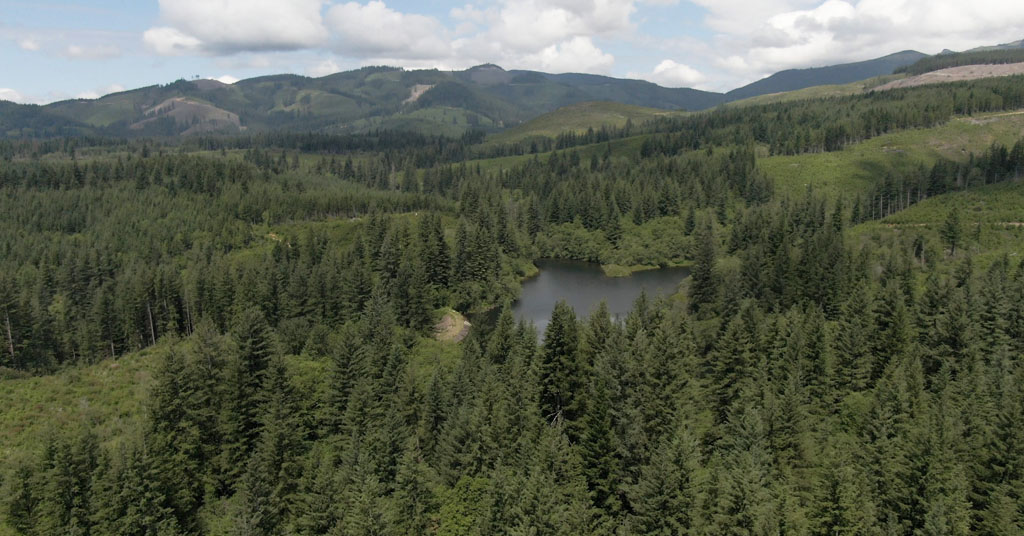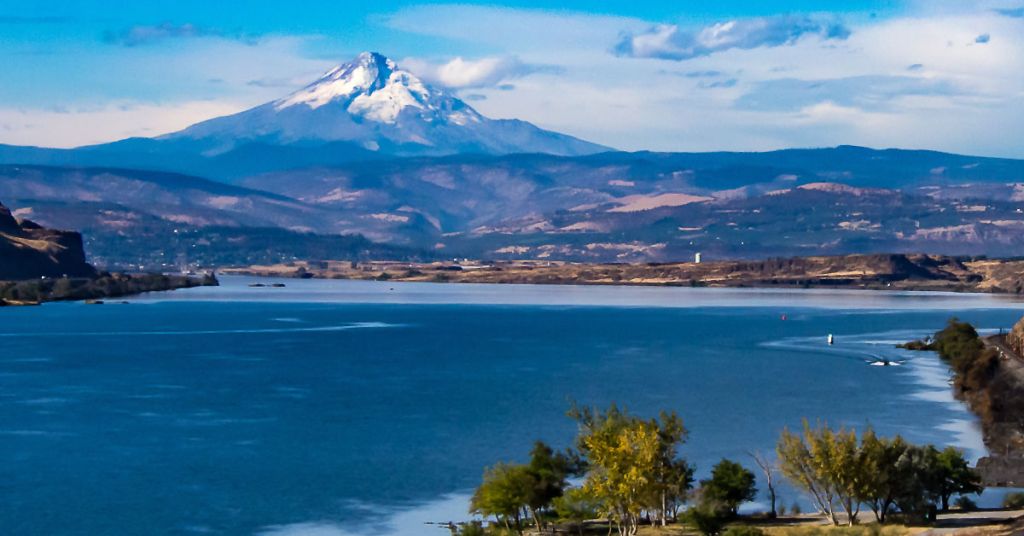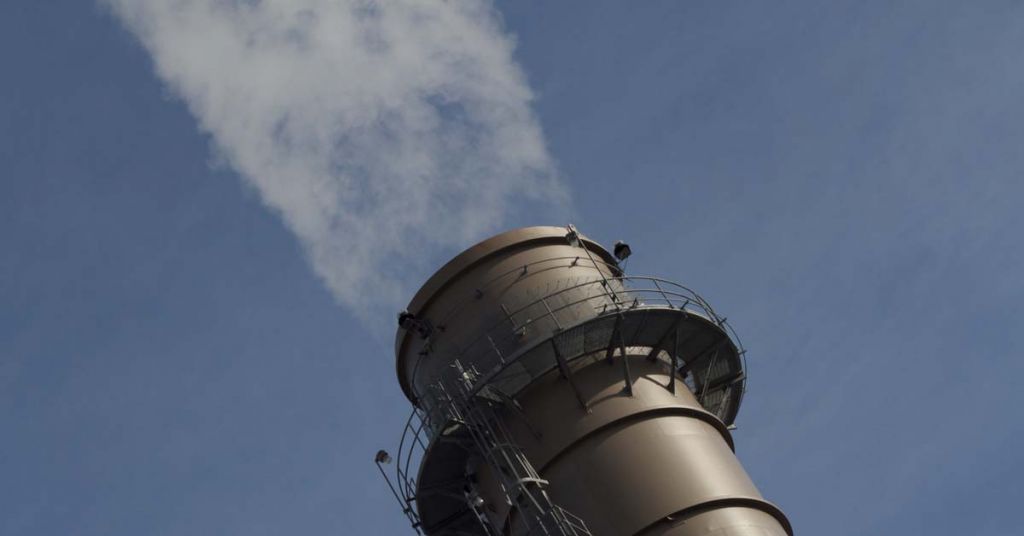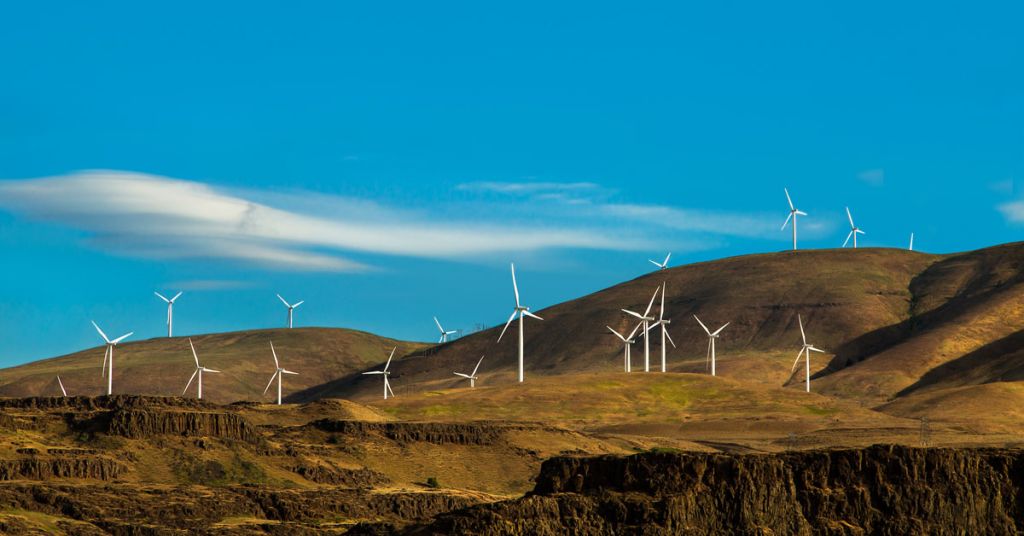As environmentalists celebrate a victory against Wind Chaser proposal, industry ponders possible ‘shift toward a cleaner energy landscape’

Future clears up: Following a decision this week, scenes like this from the natural gas-fired Chehalis Generation Facility in Washington won’t be coming to Hermiston any time soon. Photo by Steven Baltakatei Sandoval/WikiMedia Commons
By Ilana Cohen, April 14, 2021. On April 5, New York-based Perennial-WindChaser conceded its fight to build a fracked gas-fired power plant near Hermiston in Umatilla County, Oregon. If constructed, the plant would have become one of the state’s largest stationary sources of greenhouse gas emissions.
Legal counsel for Perennial-WindChaser LLC informed the Multnomah County Circuit Court of Perennial’s decision to terminate the Wind Chaser Station only a day before the court was set to hear oral arguments from Perennial and environmental advocacy organizations Columbia Riverkeeper and Friends of the Columbia Gorge.
In November 2020, the two organizations filed a Petition for Judicial Review against Perennial, a subsidiary of a subsidiary of the Japanese industrial conglomerate Sumitomo Corporation, and the Oregon Department of Energy, alleging ODOE violated state law in determining Perennial lawfully began construction on the plant in question.
MORE: Oregon allows controversial fracked gas power plant to begin construction
Now, state environmentalists are celebrating what they consider a momentous victory in their broader campaign to make Oregon fossil fuel-free. Staff attorneys with Columbia Riverkeeper and Friends of the Columbia Gorge attribute Perennial’s decision in no small part to their groups’ legal action and are hopeful Perennial’s withdrawal from the project will set a powerful precedent.
“This is a huge win for us [and] for the climate,” said Erin Saylor, a staff attorney with Columbia Riverkeeper.
Bellwether for natural gas infrastructure?
The termination of Wind Chaser’s construction follows the shutdown of several gas-fired and other fossil fuel power plants in the state, most recently including the closure of Oregon’s last coal-fired power plant in Boardman.

Perennial chaser: Attorney Nathan Baker. Courtesy Friends of the Columbia Gorge
With the elimination of Wind Chaser, no proposals for new gas-fired power plants remain pending before Oregon’s Energy Facility Siting Council.
Nathan Baker, a staff attorney for Friends of the Columbia Gorge, says these developments are telling of the greener direction in which the state’s energy market and power system is shifting. Whether that transition will include much room for natural gas, often considered a “bridge fuel” to a decarbonized energy system and which accounted for one-third of Oregon’s net electricity generation as of 2019, is unclear.
But if environmental advocates are right, the death of Wind Chaser may well be a bellwether of the future for natural gas infrastructure in the state.
“Wind Chaser was really the last of a dying breed,” said Baker. “We view new fossil fuel plants as relics of a bygone era and certainly not part of Oregon’s future.”
Perennial did not respond to requests for comment. Company spokesperson J.J. Jamieson told Columbia Insight a statement on Wind Chaser’s termination is forthcoming.
Costs mounted
After seven years of failing to secure a purchaser for the Wind Chaser Station’s power output since Perennial first proposed its project in 2014, the mounting legal costs of defending it in court seem likely to have been the tipping point in Perennial’s decision to terminate it.
“I think they realized that their chances were not good, and [they] would continue to be tied up in litigation for quite a while,” said Baker, noting the timing of Perennial’s decision to back off of Wind Chaser amid legal proceedings. “It just literally did not make sense [for Perennial] to keep throwing money in a project that had really no prospect of ever panning out.”
[perfectpullquote align=”full” bordertop=”false” cite=”” link=”” color=”” class=”” size=””]“This could very well reflect a shift toward Oregon’s cleaner energy landscape.” —Jennifer Kalez, ODOE[/perfectpullquote]
Perennial’s legal counsel may have shared that sentiment. Karl Anuta, an attorney representing Friends of the Columbia Gorge and Columbia Riverkeeper, recounted a phone conversation he had with Richard Allan, legal counsel for Perennial, the day before oral arguments were scheduled. According to Anuta, Allan suggested that he believed new natural gas power plants have no future in Oregon.
Anuta said Allan also suggested in their conversation that advancements in battery storage technology could further disincentivize developers from pursuing such projects.

Efforts rewarded: Activists delivered letters to state government offices in October demanding the termination of Perennial’s site certification. Photo by Allyson Woodward
The Wind Chaser Station was originally intended as a “peaker” power plant, providing additional power to the grid as a backup for intermittent renewable energy sources like wind and solar during peak power demand—a function also served, though with far fewer emissions, by battery storage.
Richard Allan did not respond to requests for comment from Columbia Insight.
Hal Nelson, an associate professor in the Department of Public Administration at Portland State University, is skeptical battery storage can provide a viable pathway to solving the problem of intermittent renewable energy sources in the state.
“Batteries are not a silver bullet for the Northwest capacity shortage,” he said.
Nelson sees more potential in efforts to decentralize the state’s energy system and alleviate pressure from the grid overall through the development of grid-interactive buildings and micro-grids.
“That I think is where the future for players like Sumitomo is,” he said.
MORE: What’s wrong with solar power? More than you know
In any case, between environmentalist opposition and the expense of building and maintaining fossil fuel infrastructure in a region with an increasing focus on renewables, Nelson said he didn’t expect to see many more projects like Wind Chaser.
“I’m not optimistic that we’re going to be citing natural gas generation plants in Oregon or Washington anytime soon,” he said.
Shift toward cleaner energy
Earlier this year, state lawmakers introduced a bill that would prohibit the Energy Facility Siting Council from issuing site certificates to any new generating facility that produces electric power from fossil fuels, including natural gas.
That effort comes at a time when Oregon more broadly is bolstering its commitments to clean energy and climate action, including with an executive order signed by Gov. Kate Brown in March 2020 directing state agencies to take action to support reducing Oregon’s greenhouse gas emissions by at least 45% below 1990 emissions levels by 2035 and at least 80% below 1990 levels by 2050.
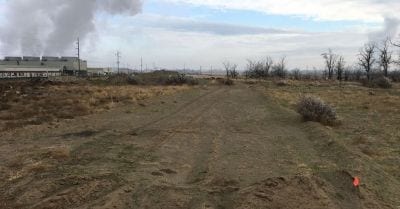
Dead end: Absent a buyer for the power it planned to produce, construction at the Wind Chaser site never really got off the ground. Courtesy of Columbia Riverkeeper
Absent legislative action, however, new natural gas infrastructure remains permissible and possible—even if unlikely, due to economic or political circumstances—in the state.
“The process and the standards [for energy facility siting] are implemented regardless of the type of energy facility, so it is possible another natural gas-powered plant could be proposed and/or approved in the future,” said ODOE spokesperson Jennifer Kalez in an email.
Kalez also noted, however, that most of the other energy projects pending approval from the state’s Energy Facility Siting Council are solar.
“This could very well reflect a shift toward Oregon’s cleaner energy landscape,” she said.
For now, Oregon environmental groups are awaiting an official public statement from Perennial about the termination of Wind Chaser. They’re looking to see how it plans to “retire” the Wind Chaser site per its requirement under state law, including whether it will deconstruct the access road and bridge Perennial built as part of “Phase 1” construction.
They’re also already identifying new targets in the fight for a fossil fuel-free future.
Columbia Riverkeeper, for instance, has turned its focus to fighting against TC Energy-owned pipeline system Gas Transmission Northwest LLC’s proposed construction of a new compressor station in Morrow County.
“We still have a lot of concerns about what’s happening at the state level and the regulatory level,” said Saylor. “We’re going to turn our sights to other projects that are pending out there and make sure that these companies really understand that Oregon is not a place for new fossil fuel infrastructure.”
Ilana Cohen is a Climate Tracker media fellow and a student at Harvard University, where she organizes with the Fossil Fuel Divest Harvard campaign. She has contributed to Inside Climate News, The Nation, The Guardian, Teen Vogue and other publications.




